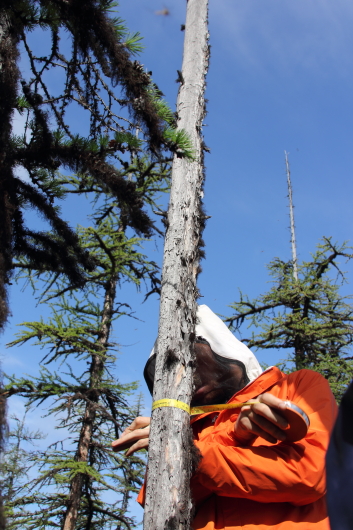
Sam measures the diameter of a still standing dead tree, which the survey team calls a “snag.” © Becky Tachihara
Today is a physically easy but mentally active day for the terrestrial team. Over the past two days we estimated and collected biomass from each of our four plots in the area, and also measured snags (standing dead trees) and coarse woody debris (fallen dead trees). The biomass was from a one-meter square quadrant per plot, sorted into moss/grasses and everything else. Back at Orbita we went through it again – pulling anything out of the moss pile that didn’t belong and then sorting everything else into shrubs, vaccinium, Labrador tea, and fine woody debris. The goal is to figure out the amount of carbon stored in the aboveground biomass, so our next step was to weigh each category. We then take a subsample of each, weigh it, dry it, and weigh it again. The drying process takes 24 hours, so we are still working on the samples from the first plot. We will then combust a small portion of the subsample to determine carbon content, which can then be scaled up to larger quantities of biomass since we know the weigh for each category within the quadrant, and can average those to estimate groundcover for the entire plot (we only collected biomass once in each plot, but we estimated it in four locations per plot). In the meantime, we are analyzing data and religiously gluing, sanding, counting, and measuring tree rings to be assessed for relationships between tree growth rates over time as well as productivity. Yesterday Allison counted a tree core that was over 350 years old!
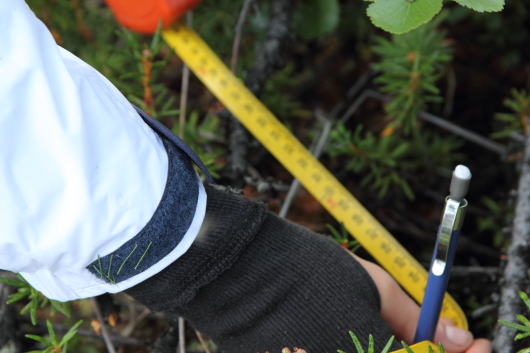
Dylan and Sam measure the length and diameter of downed trees as part of the terrestrial survey. In survey terms, dead trees that are no longer standing are called “coarse woody debris” along with other dead wood matter that accumulates on the forest floor. © Becky Tachihara
The weather has cooled off a bit and become a bit more variable – more clouds, wind, and some occasional rain. Which has been a welcomed change (less mosquitoes and much more comfortable for working in the field – at least for the terrestrial team), although it doesn’t bode well for our trip north. Hopefully sometime this week the weather will be adequate enough! We are planning to go to Pleistocene Park tomorrow though, where we hope to get another plot completely finished with help from the rest of the (awesome) group.
Love to everyone back home!
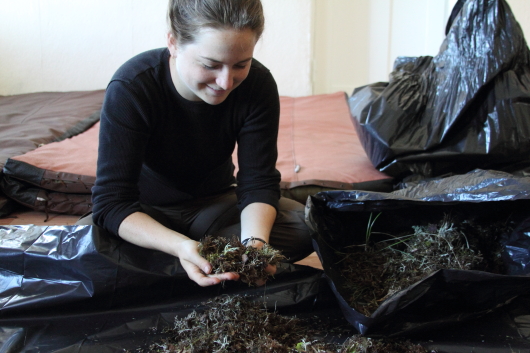
Dylan picks through a handful of moss gathered at one of the terrestrial survey’s plots. The moss will later be weighed, dried and combusted as part of calculating aboveground biomass. © Becky Tachihara
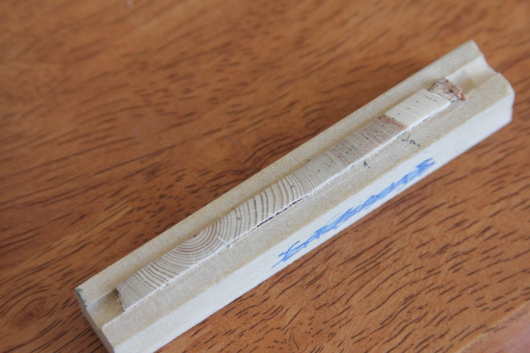
A mounted, sanded and “dotted” tree core sits on the table in Orbita where terrestrial team members will sit at the microscope for hours on end counting and measuring miniscule tree rings. © Becky Tachihara
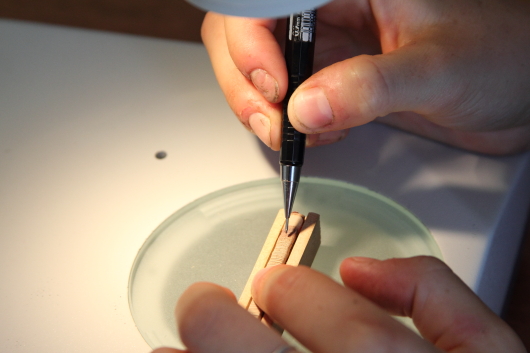
Using a microscope and a very, very sharp pencil, Dylan counts rings in a tree core, making a mark every 10, 50 and 100 rings. © Becky Tachihara



